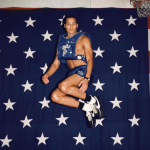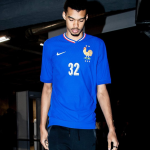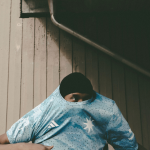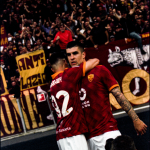
Architecture is once again the source of inspiration for football shirts
A trend that started with Nike and exploded with PUMA
July 28th, 2020
Even in this strange summer of play and not only of the transfer market, of cups and not of rallies, the releases of the new shirts attract an ever wider audience thanks to the contamination of worlds only apparently far from football. The trends are defined and the evolution of football jersey seems to follow a very linear path, with the 3 main brands - Nike, adidas and PUMA - who challenge each other with innovative design shots, revolutionary patterns and extravagant cultural references.
One of the most visible trends after the wave of kit 2020/21 - which lacks sacred monsters such as Manchester United, Liverpool and Real Madrid - is that relating to architecture and symbols that make cities different and unique. The graphic references and the sources of visual inspiration are indispensable to create a kit that can have an impact on merchandising and a positive impact in terms of branding.
To get to fully understand how and why architecture is having a strong impact on next season's kits, we need to go back a few years. In 2017 Nike designs the uniforms for the 2018-19 season and for the first time the main reason is urban planning. On the third jerseys of Barcelona, Rome and Tottenham, the swoosh chooses to pay homage to the urban elements that characterize the metropolises of reference such as Avinguda Diagonal, the Borough of Haringey area and the map of the Eternal City. In that same year, the Beaverton brand approaches the architecture and the iconic materials that make it universal: the tribute to the marble of the Milan Cathedral on the third Inter shirt is unforgettable.
After riding the wave, Nike focuses on other concepts and leaves room for PUMA which follows the path opened by the American brand and transforms it into a reason to focus on. In fact, all kits of the 2020-21 season by PUMA Football have a very clear architectural reference. Borussia Dortmund celebrates the "Westfalenhalle" subway, a mandatory passage point for Borussia fans heading to Signal Iduna Park. Olympique Marseilles pays tribute to Le Corbusier's extraordinary work - the Cité Radieuse, the first Unité d’Habitation. Manchester City exports all over the world the art of mosaics which makes North Manchester one of the most important artistic points in the city. The same idea applies to Rennais shirt, with the Odorico mosaic pattern dominating. Slavia Prague focuses entirely on a double reference, with the heraldic coat of arms of Prague and the zodiac signs of the Astronomical Clock. Borussia Mönchengladbach celebrates its 120 years of history with the architecture of the facade of the new headquarters. Lorient, on the other hand, incorporates the elements of the port, unlike the Nancy which is inspired by the floor of Piazza Stanislas. PSV, on the other hand, declines the architecture in a more veiled way, making the theme of the famous lights of the Dutch city fit into the "City of Lights" marketing campaign.
The latest example arrived is that of AC Milan, with one of the most beautiful jerseys of the last 10 years. The "bringing eternal architecture onto the pitch" that stands out on social networks at the time of launch requires no further explanation. The pattern recalls the flooring design of the Galleria Vittorio Emanuele II in Milan, one of the most iconic elements in the center of Milan. The last team that is missing is Valencia, but also in this case from the leaks - which have never been more faithful than the kits presented this year - there is another clear reference dedicated to the Llotja de la Seda.
The architectural trend of PUMA Football began with the launch of Italy's third shirt, inspired by the Renaissance movement. The "Rinascimento" declines an unconventional green color that at the beginning made people discuss, but that was appreciated and sold a lot. In fact, from the 2019 activity report prepared by the FIFC, it says that "it produced high-level results in commercial terms, affecting 35% of the sales of the official national team shirts in the 2019 calendar year".




























